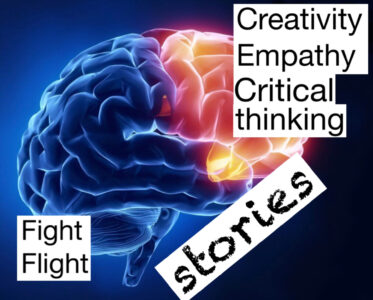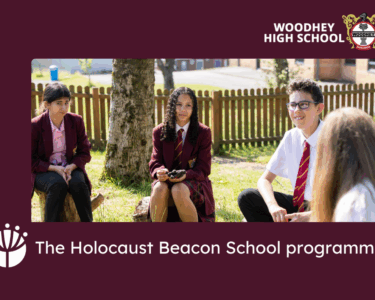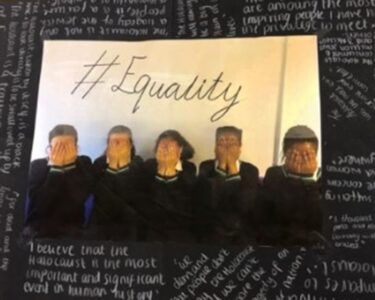“Our kids and their kids just playing together”
April 7, 1994: For both physical and emotional safety, Teresa and I pulled several mattresses into the centre hallway of our home in Kigali, Rwanda. The night before, the president’s plane had been shot down, and all hell had broken loose. The next 100 days would soon become known as the genocide of the Tutsi in Rwanda.
By taking refuge in the hallway, we were putting as many brick walls as possible between our family and the bullets ripping through the front yard trees. The day had been horribly numbing listening helplessly to the cries of ordinary neighbours, knowing they were being beaten and killed. Now, we would try and get some sleep together with our three young children held close.

The next morning, Anitha, the young Rwandan woman who lived and helped out in our home, came in from the backyard with an unbelievable story.
Our ordinary neighbours had told her that the Interahamwe – the local name for a killing squad – had come to our gate the previous night, armed with machetes, clubs, and assault rifles with the intent to kill us. When they heard the commotion, these ladies, with seemingly no thought of their own safety, worked their way to a position between this gang and our gate. They then started pleading for our lives.
Hunkered down in our hallway less than 100 feet away, we were completely oblivious to the fact that our home was moments from being attacked. While we’d heard gunfire all around our neighbourhood, never once had we thought that our family would become a target.
Anitha went on to explain how the women had:
- Told the Interahamwe that we were not Belgian––there had been rumors flying around that the Belgians had shot down the president’s plane.
- Told the gang stories of acts of ordinary, neighbourly, kindness we had done over the years, like taking an expectant mom to the hospital in the middle of the night.
- Told the would-be killers about our children playing together with their children. Mindy, Lisa, and Shaun had spent four years growing up with the Rwandan kids in our community—playing, learning, and building bonds together.
Who would’ve guessed that those bonds would inspire our ordinary neighbours to risk their lives and stand up for us that night. I honestly don’t think we had the emotional bandwidth at the time to take it all in, however I now know that we are alive today because of their love and courage.
For nearly three decades I’ve thought about this story, mostly about the bonds built by ordinary children simply playing together. However, when I started learning about how the brain works, I found an incredibly useful framework for unpacking this story.
Like most people, I was vaguely familiar with things such as the fight/flight mode that’s triggered when we’re startled, threatened, or angry. Digging deeper, I learned how the amygdala which controls the “fight/flight” responses could basically hijack the brain, greatly reducing the activity of the prefrontal cortex (logic/ creativity/ empathy). Now it was making sense why in certain situations, I – or someone close 😉 – might seem irrational or incapable of empathy when feeling threatened or triggered by something.
Looking back at the story of the would-be-killers at our gate, it’s easy to see that these men were in a fight/flight triggered state, or as neural scientist Dan Siegel would say, “in their downstairs brain.”

Image courtesy of Carl Wilkens, still from his talk presentationSo, from a neural pathway perspective, these women took on the daunting task of getting the leader, or someone close to him, out of his “hijacked” condition, and into his “upstairs brain” where logic and empathy would be more likely to come into play. And they did this incredible feat with stories. Stories of ordinary neighbour stuff.
This “upstairs/downstairs” lens is not the only lens needed to unpack a story like this, but it is the one I keep reaching for in charged situations. Ideally, I want to pause and ask what the other person is feeling and needing. In reality, I do that more often after the fact, even though I know I can’t turn the clock back. What I can do though is journal about the experience and answer the four questions of Psychologist Diana Wais:
- What triggered me or the other person?
- What am I or the other person afraid of?
- What is driving the fear?
- What do I need to heal in myself in order to better respond to a potential trigger in the future?
So often pain, fear, and shame are the unconscious emotions behind our triggers.
Research has shown that self-awareness is one of the most effective practices to develop for the smooth collaborative working we need between our “upstairs” and “downstairs” brain. Self-awareness and self-regulation are my first jobs.
The more I learn about the principles of “fire to re-wire” and neural frameworks, the more I ask myself about the influence of news and other potential triggers via social media. Are they partially responsible for unnecessary time spent “downstairs”, making it easier to race there at the smallest trigger?
So, what’s the “fire-to-rewire” work I’m currently focused on? Hmm…
- Regulating the amount of time, I spend with the news and polarized social media posts, while being intentional about finding the good, the beautiful, and expressing gratitude.
- Recognizing that I have subconscious beliefs that affect my thoughts and actions. Again, through journaling I identify and either debunk or reinforce these subconscious beliefs. An example would be how years ago I used to subconsciously believe that most people only care about themselves. When I “uncovered” this subconscious belief I saw it was not true. People do care about others; we often just don’t know how best to care.
- Replacing judgement with curiosity. This is to often done in hindsight -journaling -, but the pathways are definitely growing.
It is the awakening of compassionate curiosity that restores human connection.’
Carl Wilkens – Co-founder/Director, ‘World Outside My Shoes’
Find out more via: http://www.worldoutsidemyshoes.org/ or follow @CarlWilkens #ImNotLeaving



